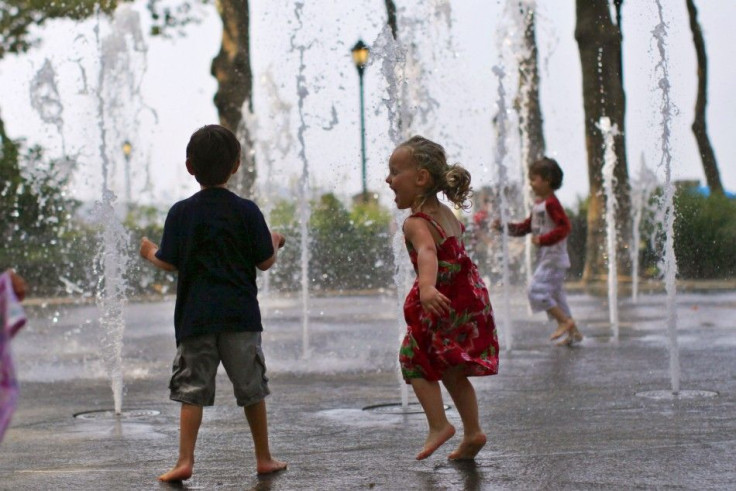Heat Moves East As New Yorkers Brace For Storms; End To Record-Breaking Temperature In Sight

The heat wave that's scorched the Midwest the past few weeks looks to be moving east.
This heat wave -- responsible for setting more than 4,500 records in terms of daily high temperatures in various locations during the past 30 days, according to MSNBC -- will bring with it the storms that have wreaked havoc across the region and left hundreds of thousands of people in Ohio and West Virginia without power.
It also will bring with it the steaming temperatures that have soared into triple digits 13 consecutive days in St. Louis. Meanwhile, Louisville, Ky., Pittsburgh, and Washington all are expected to break their all-time records, each of which tops out at between 100 and 110 degrees. And Chicago is looking at a fourth straight day of 100-plus temperatures, MSNBC reported.
Possible dehydration and potential power loss aside, the smoke caused by the many Western wildfires may soon have an effect on the air quality in the heavily populated U.S. Northeast. [P]revailing winds over the last week have been sending that smoke east. ... The wildfire smoke is on top of other air pollution, MSNBC said.
Maryland news station WBAL-TV reported that young children and the elderly are especially at risk.
This news won't be welcome to people already sweating out a summer that's been rough on the Northeast. During the past five days, New York has hit 95 degrees, Pittsburgh, 96 degrees, and Buffalo, 90 degrees, according to the Weather Channel, which noted the Great Lakes region may be hit by storms on Saturday.
Severe thunderstorms are also expected to clobber New York, Pennsylvania, and surrounding areas this weekend, wrote Nick Wiltgen of the Weather Channel.
Much of the East will enjoy a big cooldown by early next week, but possibly at a steep price, Wiltgen wrote. A cold front will be sagging south through the weekend. While this front promises relief from the recent heat, it will be encountering that sticky, unstable airmass first. Add to that a core of strong winds about 10,000 feet above the ground, and you have a recipe for powerful thunderstorms.
Wiltgen added: If there's a silver lining to all this, it's that cooler weather will follow this weekend's storms. ... Lows in the 60s will be common away from the major cities, and even some 50s in upstate New York.
The heat wave headed east has already claimed 46 lives, according to MSNBC. One reason may be that people at present might be less able to handle the heat than people in the past because of all the modern comforts we enjoy today, the Indianapolis Star speculated. Air-conditioners are common, as are Slurpees from 7-11, as we seek to cool down.
Researchers at the University of Miami are showing it's not always the intensity of a heat wave that causes the most severe cases of heat-related illness and death, but rather the 'variability of the weather' in cities that have not experienced such heat -- or, perhaps, populations that have not had to experience it, thanks to air conditioning, wrote the Star's Dan McFeely. The greatest impact from the heat comes not from extended periods of high temperatures, but rather the sudden changes -- such as heat waves that occur in cities that do not normally get them, or those that occur early in a summer season, without sufficient time for residents to build up a tolerance to the heat.
Americans on the East Coast are now primed to find out whether that research is true for them.
© Copyright IBTimes 2024. All rights reserved.











